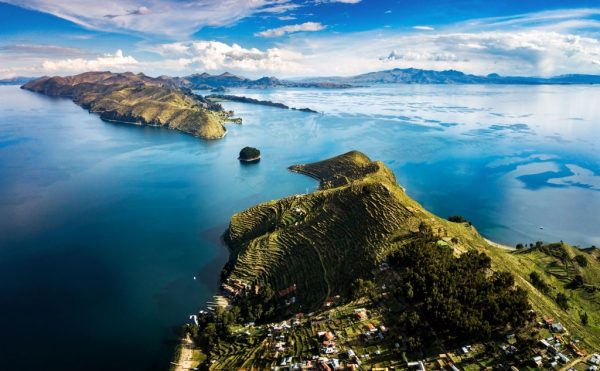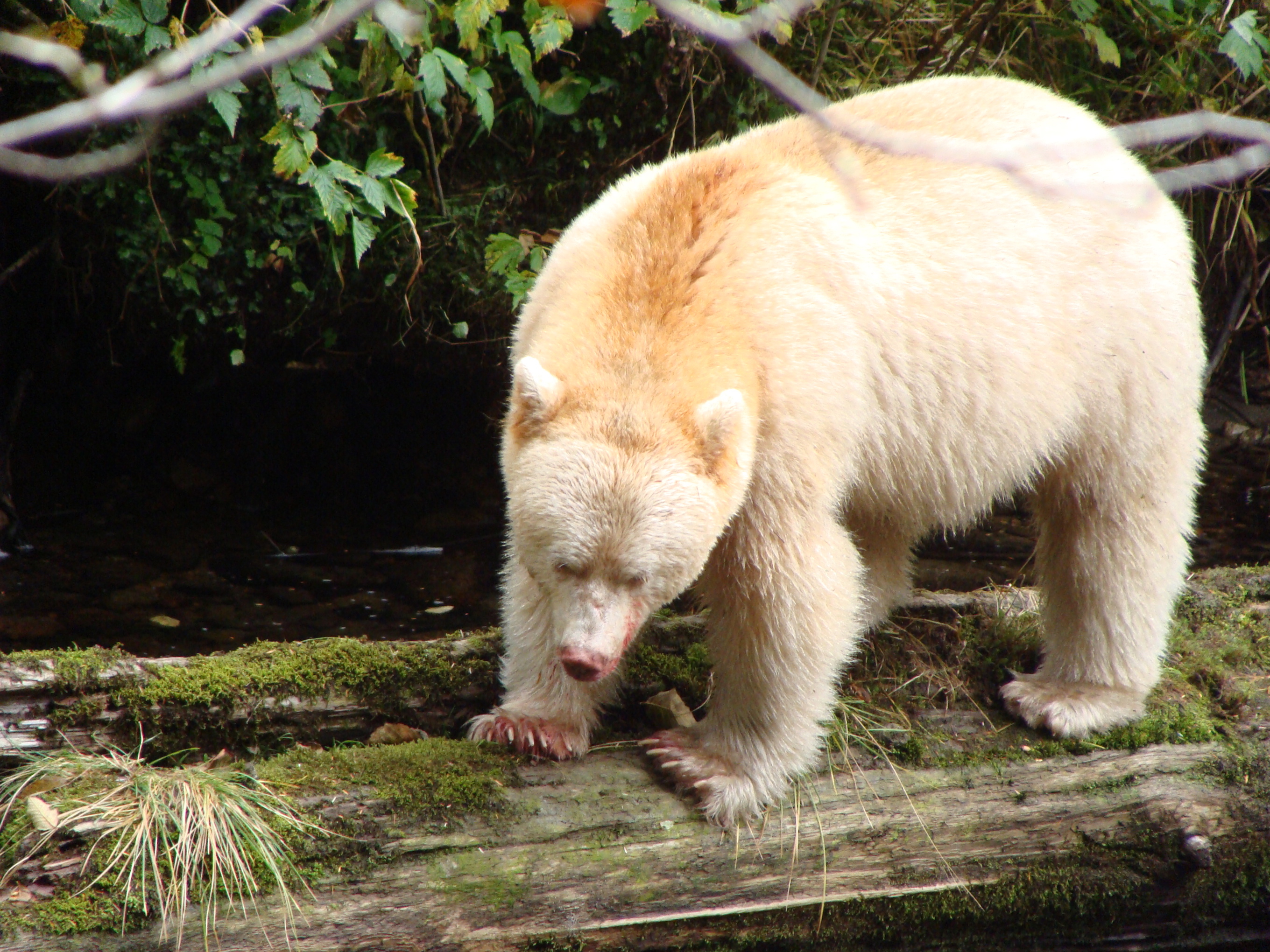

Spirit Bear Lodge (SBL) is a successful, profitable cultural ecotourism business owned and operated by the Kitasoo Xai’Xais First Nation in the remote community of Klemtu on the central coast of BC. The Spirit Bear Lodge mandate is to provide economic benefits and sustainable local employment to residents of Klemtu, but it has evolved into something much more than just an economic driver. The business is now an integral part of the conservation economy in the Great Bear Rainforest (GBR), now recognized as a globally significant conservation model, and according to National Geographic ‘the wildest place in North America’. SBL is a showcase community tourism business in the GBR, and a recognized best practice model for Indigenous community-based tourism in Canada as evidenced by their winning the Indigenous Adventure Award presented by the international Adventure Travel Trade Association at the 2017 International Aboriginal Tourism Conference hosted by the Indigenous Tourism Association of Canada. The award recognizes best practice in Indigenous Adventure travel with a focus on responsibility and sustainability.
The Spirit Bear is a genetically unique subspecies of the black bear found only on BC’s north and central coast. The bear is the namesake for the Kitasoo/Xai’xais owned and operated Spirit Bear Lodge.
Spirit Bear Lodge is located on Swindle Island in Finlayson Channel, approximately 219 kilometers north of Vancouver Island in the coastal fjords of British Columbia, Canada.
The Great Bear Rainforest is the largest tract of unprotected intact coastal temperate rainforest left on earth (over 8 million hectares). It includes a vast riparian system of over 100 unlogged large watersheds and sustains 20% of the world’s wild salmon population. It supports tremendous biodiversity. In February 2006 an agreement was reached by the government along with the logging industry, the First Nations, and environmental groups. The agreement provides permanent protection for 2 million acres.
The Great Bear Rainforest agreements were a turning point for economic development in Klemtu. Under the agreements, 50 percent of Kitasoo/Xai’xais territory is now protected from logging, mining and other resource extraction, but can be used by members for food gathering and traditional uses, and for ecotourism. The remaining is managed according to ecosystem-based management principles and actions.
Within the 50% under formal protection the following two Conservancies (one listed as Category II under the IUCN, and the other listed as Ib) are primary tourism destinations within the territory and are now jointly managed by the Kitasoo Xai’Xais First Nation and the Provincial Government:
The following are other designated Conservancies that have been created within the Kitasoo Xai’Xais traditional territory and are under joint management.
In addition to the protected areas, a commitment has been made to implement a new land management regime called ecosystem-based management throughout the coast.
EBM is a new approach to resource planning that integrates ecological, economic and social purposes and is designed to work as a management and planning regime that first looks at what is needed to be left in place to allow for a healthy ecosystem and then looks at what can be taken out.
The Kitasoo Xai’Xais First Nation is an active partner in this major coastal conservation initiative and Spirit Bear Lodge (SBL) is one of the key pieces of the conservation economy.
To quote Chief Douglas Neasloss “The new protected areas helped this community turn 180 degrees. We went from a community largely dependent on resource extractive jobs to a community whose economy was largely based on conservation and non-extractive activities.” Chief Neasloss credits much of the success to the development of ecotourism in the region and to the development of Spirit Bear Lodge.
Some examples:
The Kitasoo/Xai’xais bighouse was built in 2001 built with materials gathered from local areas within the Kitasoo/Xai’xais territory. Today, the bighouse is an important place of cultural learning and revitalization and it is used for potlatches, feasts, gatherings, the SUA youth performance group, and tourism.
The new ferry terminal was built in collaboration with the Kitasoo Xai’Xais nation to integrate and express their unique culture throughout rather than the standard government ferry terminal including:
· Spectacular gateway canoe that tells the legend of the creation of Klemtu
· Cedar plank and crest covered waiting building evocative of a traditional longhouse
· An imposing welcome carved pole by famed master carver Tom Hunt
· A spinning salmon wind vane
· Painted wood sign for Spirit Bear Lodge
· Concrete lock-block walls embedded with relief sculptures of salmon and herring. Photo by Dawn Fry courtesy of Acton Ostry.
Spirit Bear Lodge will be a key tenant in the new community Resource Stewardship office building which will open in 2018, further illustrating the close relationship between tourism and the community role in conserving the territory.
The real lesson to be learned from Spirit Bear Lodge is the need and opportunity to engage local Indigenous peoples and their traditional ecological knowledge in the stewardship of their traditional territories. Responsible tourism, in turn, can provide the local Indigenous community with economic development but equally important as a tool for conservation of their traditional lands and as an impetus for cultural retention and often renewal. SBL is an excellent model for conservation-based tourism in a remote Indigenous communities adjacent protected areas within their traditional territory.
Communities along the British Columbia coast, and those within the Great Bear Rainforest have been hard hit during the pandemic. The Kitasoo Xai’ Xais Nation in the community of Klemtu (owners of Spirit Bear Lodge) have implemented a State of Emergency restricting all travel in and out of the community through the latter half of 2020 and the first part of 2021.
The Lodge managed to re-market tours to Canada only clientele for 2021 and were surprisingly very successful, but unfortunately with the uncertainty around the rise in Covid variants the neighbouring community of Bella Bella does not expect to allow schedule or charter flights into Bella Bella for the foreseeable future and into the summer. The route for most guests to SBL is via the small fixed wing airport in Bella Bella and then by boat or floatplane to Klemtu. Both the Klemtu and Bella Bella communities are concerned with the lack of protection for their unvaccinated youth under 18 so the strong community protection measures will likely stay in place for the next several months until cases are well under control. Fortunately guests have maintained their deposits for bookings in the future.
On the positive side the lodge did run some in house programming with SBL staff and others from the community including a major beach clean-up throughout the territory. This was funded by the federal government, and 127 metric tons of plastics, old fishing nets and other debris was removed from the local shorelines and beaches over a 30 day period. This initiative will continue for the spring/summer of 2021.
In addition the community have taken the opportunity to do a major renovation at the lodge. Fortunately when COVID hit the business was in a strong cash position. This work has been done with assistance from Coast Funds, the entity charged with developing and supporting the conservation economy in the Great Bear Rainforest.
On the research side there are many projects underway with Kitasoo Xai’Xais stewardship. One interesting project that is taking advantage of this operator downtime is some intense observation of bear behaviour in a heavily guided grizzly watershed in the area without tourists in 2020 to compare with bear behaviour once the operators return in 2021, or most likely 2022.
For further detail on the Spirit Bear Lodge please refer to the full story on the Coast Funds website at: https://coastfunds.ca/stories/the-success-of-spirit-bear-lodge/
© Linking Tourism & Conservation (LT&C) 2019
We are grateful that you support the work and mission of LT&C! We accept donations through Credit Card, PayPal or international bank transfer:

Donate through Credit Card
Please click the Donate button and then choose your PayPal account
Bank details:
Cultura Sparebank
Pb. 6800, St. Olavs plass
N-0130 Oslo
Name: Linking Tourism & Conservation,
Account no.: 1254 05 95168
IBAN: NO8712540595168
BIC/SWIFT: CULTNOK1
Routing BIC: DNBANOKK
Please mark payments with your name and/or email address
Sign up for an LT&C membership by filling in the details below.
Would you like your LT&C-Example/Initiative to be listed on our website? Please fill in the form below.